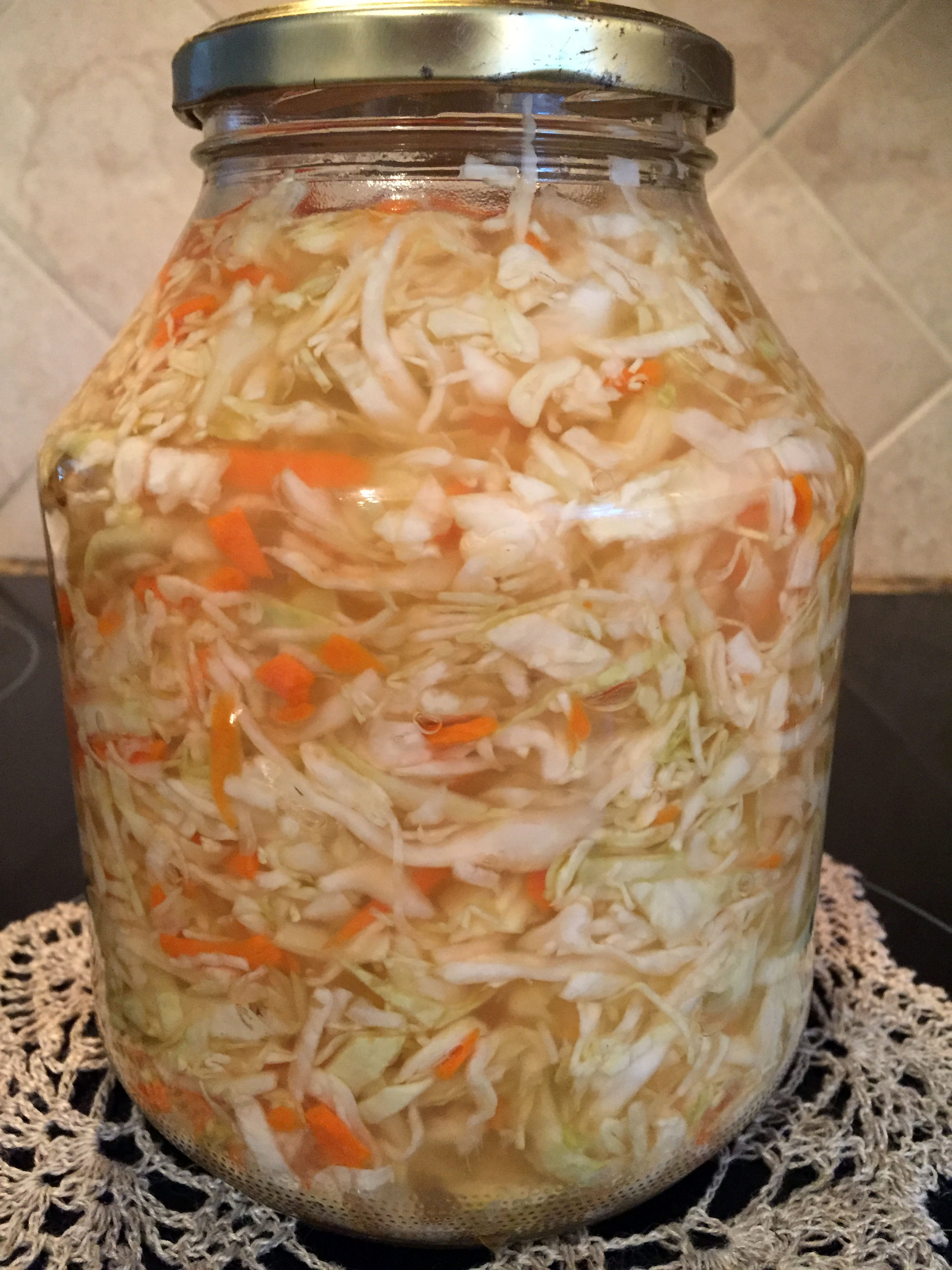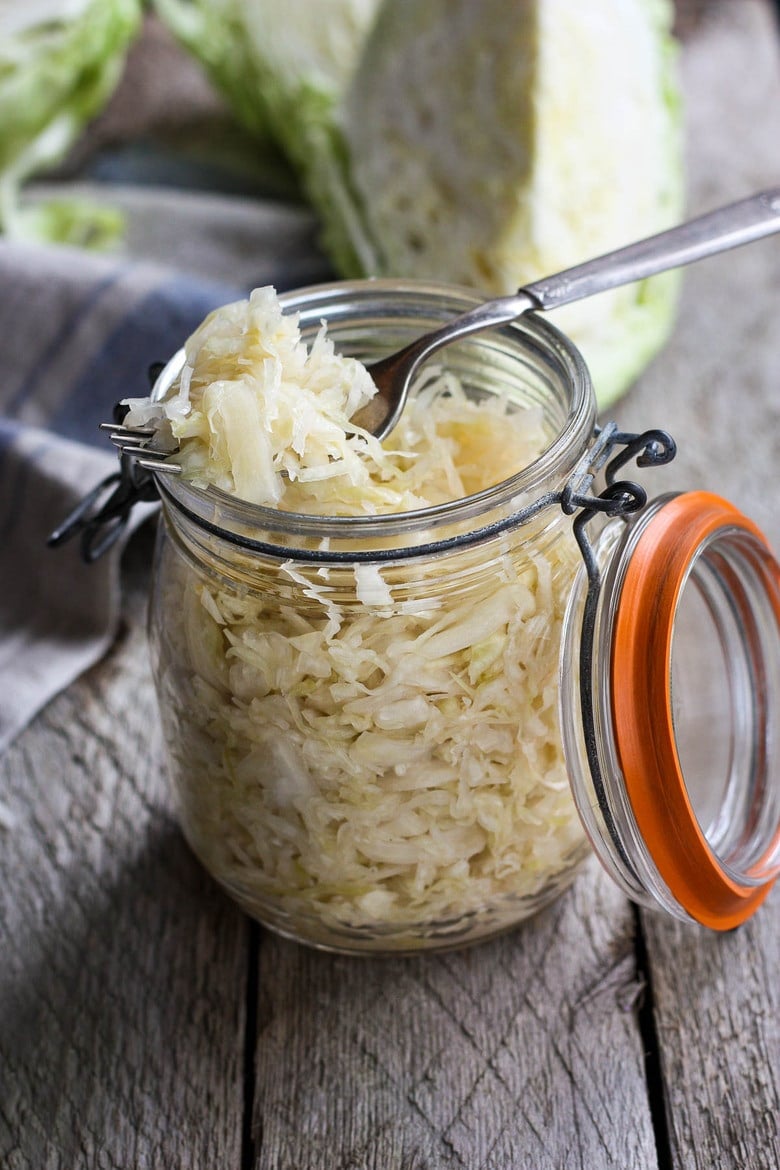
Fold outer cabbage leaves into quarters and place on top of cabbage mixture in jars. Mason jar with a layer of olive oil across the top of the ferment Mason jar with a white lid and a baggy liner to help hold fermenting cabbage under the brine Mason jar with a white lid and an airlock installed you can pick airlocks up for a dollar or three at your local hardware or home brew store.

Reserve the remaining salt water.
How do you ferment cabbage. Shred cabbage into small thin pieces using a large knife or the slicing blade of a food processor. Save the hard bottom of the cabbage and set aside with the top leaves for later use. Put shredded cabbage into a large bowl along with the sea salt.
Use your hands to massage the cabbage. Grating the cabbage by hand or in a food processor provides optimal surface area for the fermentation liquid to penetrate. Alternatively you can slice it into thin ribbons or chop it into the size you desire although larger pieces generally require a longer fermentation.
Wait patiently for your cabbage to ferment. After a day check how everything is going there should already be a little bubble rising from the bottom of the boat especially if the temperature is high summer. Make sure the cabbage is still submerged.
Shred cabbage finely with a sharp knife or using a mandoline. You may also use a food processor for this purpose it certainly makes life easier. We like it really thin.
About 1 - 2 mm. Take the jar and place in one handful of cabbage then press the cabbage down with your fist as hard as you can. Here is a simple way to take your cabbage and turn it into sauerkraut for your long term storage.
Fermenting is easy and healthy. Add the cabbage to a quart size mason jar. Add an inch or two at a time.
Pound it down to take out the air pockets. By the time you get to the top you should be able to push down on the cabbage and see lots of liquid. Pack cabbage mixture into one half gallon-sized jar or two quart-sized jars.
Fold outer cabbage leaves into quarters and place on top of cabbage mixture in jars. Place 4 ounce jelly jar or glass fermentation weights on top of cabbage leaves in jar. Gently press down until all the cabbage is submerged under liquid.
Shred the cabbage thinly a food processor makes light work of this. Layer the cabbage and the salt in the tub or bowl. Massage the salt into the cabbage for 5 mins wait 5 mins then repeat.
You should end up with a much-reduced volume of cabbage. The longer you ferment the more lactic acid bacteria you will have in your cabbage. And that is what makes any fermented vegetable extremely beneficial.
The picture on the right shows exactly how your cabbage will look like in 10 days. Take the cabbage from the crock and place it in an air tight glass jar for storage in the refrigirator. Put cabbage in a suitable fermentation container and add 3 tablespoons of salt.
Mix thoroughly using clean hands. Pack firmly until salt draws juices from cabbage. Repeat shredding salting and packing until all cabbage is in the container.
Mason jar with a layer of olive oil across the top of the ferment Mason jar with a white lid and a baggy liner to help hold fermenting cabbage under the brine Mason jar with a white lid and an airlock installed you can pick airlocks up for a dollar or three at your local hardware or home brew store. Some of the most delicious ones to ferment include cabbage carrots cucumbers peppers beets garlic and cauliflower. In a bowl or glass measuring cup mix together 4 cups of filtered water and 2 tablespoons of non-iodized salt.
Microwave the brine in 45 second intervals stirring each time until the. How you choose to prepare your vegetables is a personal choice though some vegetables are better suited for leaving whole while others ferment better when shredded or grated. Decide If You Will Use Salt Whey or a Starter Culture.
A fermented food recipe may call. It should be about 1-3 inches above the cabbage. If this hasnt happened add cooled boiled salt water to the pot.
We ended up needing about 3-4 cups of salt water. Pour it over the cabbage till it is submerged you may not need to do this if your cabbage has created enough natural liquid. Reserve the remaining salt water.